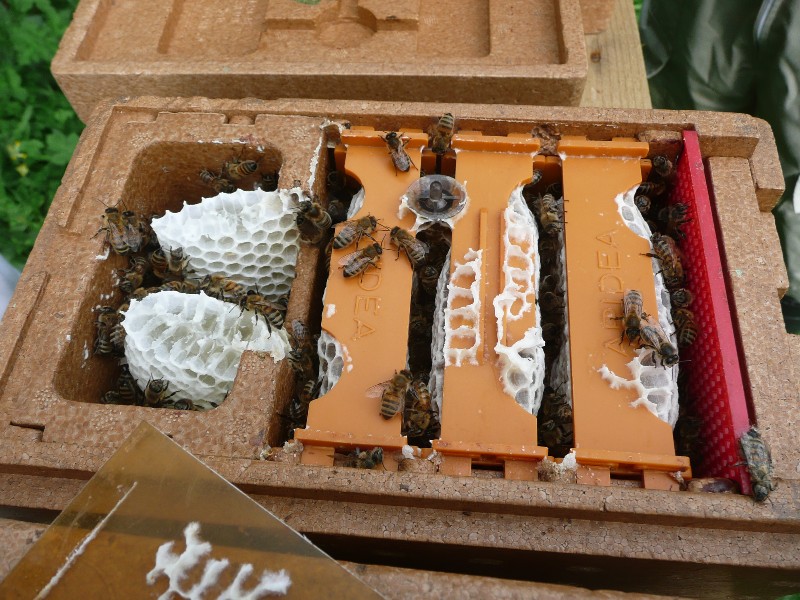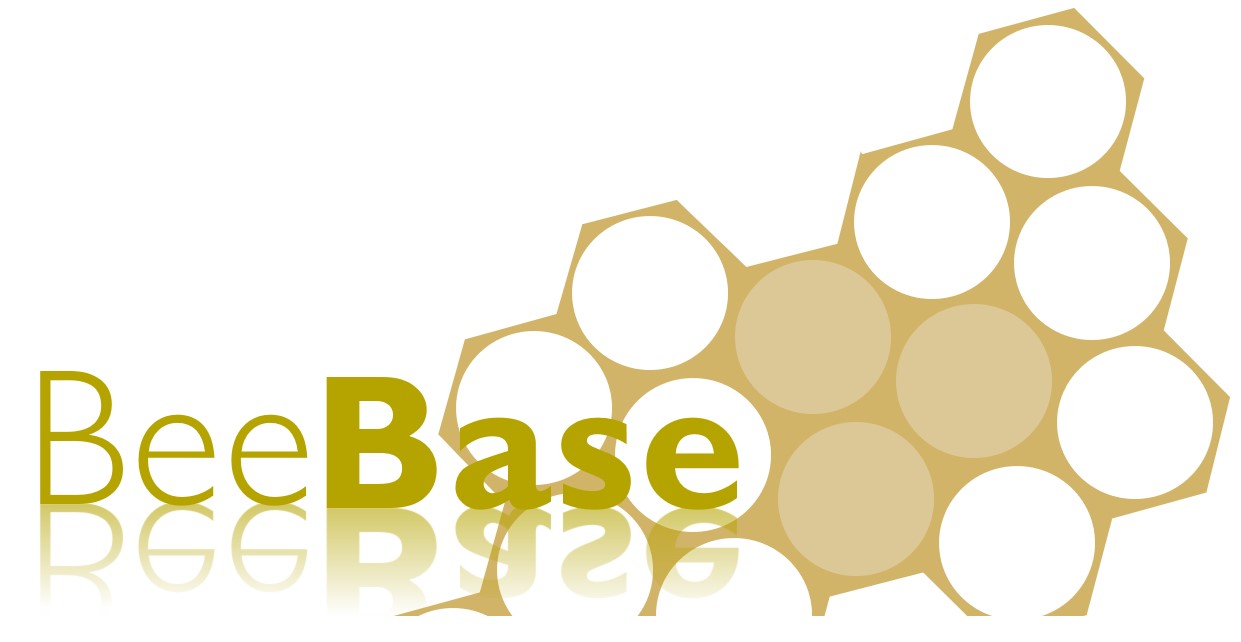Mating Nucs
Three styles of mating nuc are commonly used at the National Bee Unit; the Apidea mating nuc, two-way mating nuc designed in Poland and the more traditional 5-frame nucleus. The photo on the right shows a queen cell being introduced in the middle of a frame of hatching brood in a 5-frame nucleus colony. Placing the cell next to hatching brood enhances the chances of the cell being accepted by the colony.
The basic principles we apply to managing our mating apiaries are: small entrances to avoid robbing, plenty of food and if you use a 5 frame nucleus then sealed stores are better and cause less robbing than sugar syrup, nucs laid out with the entrances pointing in different directions to avoid drifting, queen cells placed in the nucs 1-2 days before hatching, selected drone mother colonies in surrounding apiaries, and we leave them alone for about 2-3 weeks before checking whether the queens have been mated properly. At this stage it is possible to check that the brood patterns are good.

Artificial Insemination
The NBU also uses AI (or Instrumental Insemination II) for a number of purposes: Principally for research, e.g., within the Waterloo funded "Queens project", but also for training and breeding of selected stocks. It has been one of the key skills of the NBU for over 20 years.
Acceptance Rates
The Queen Rearing method used by the NBU works really well with acceptance rates being around 80% of cells grafted and with final queens produced from these cells being around 80%. Of the 8112 cells raised in the last 20 years 6550 queen cells were successfully produced leading to 5240 successfully mated queens. Not bad for the UK climate.
